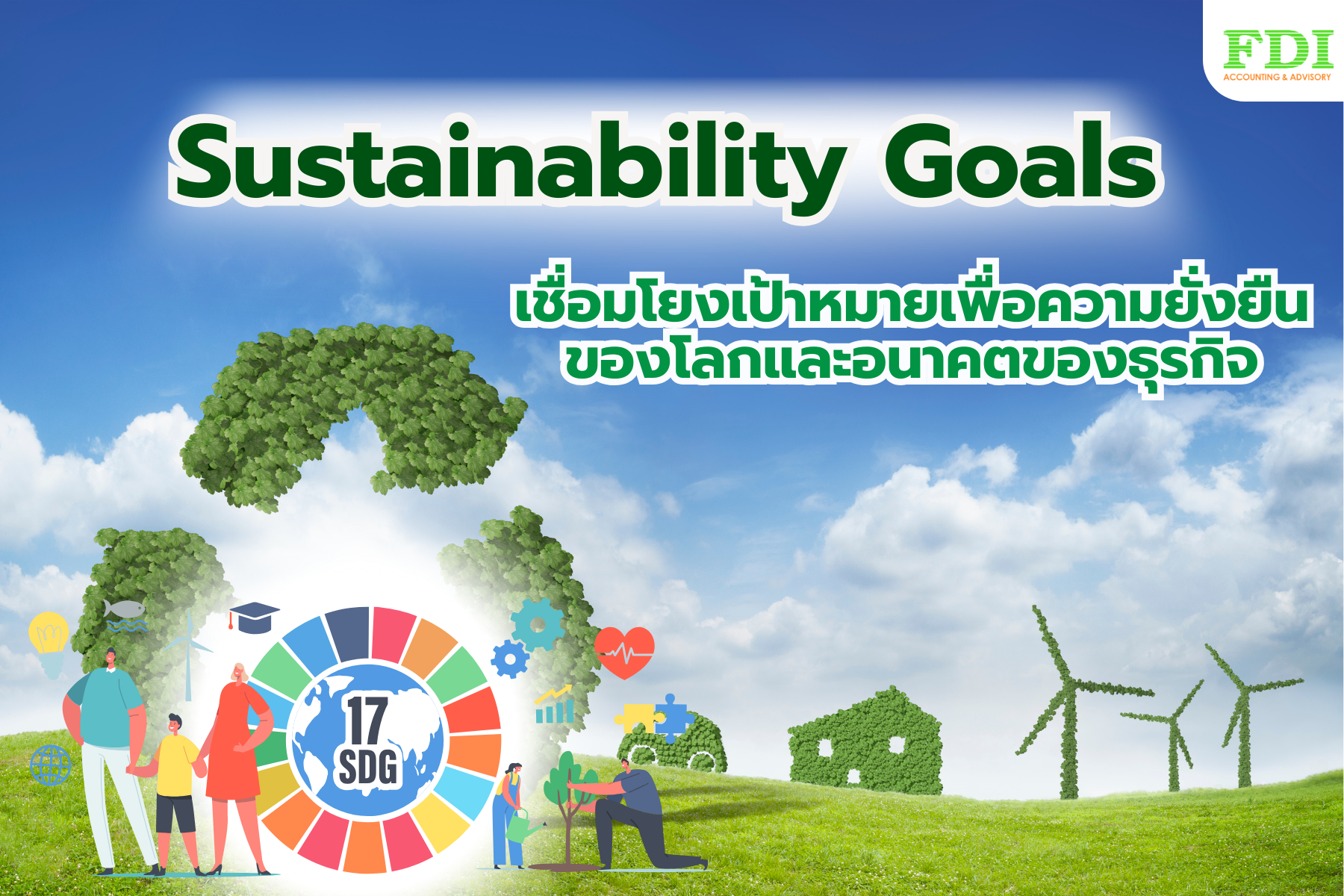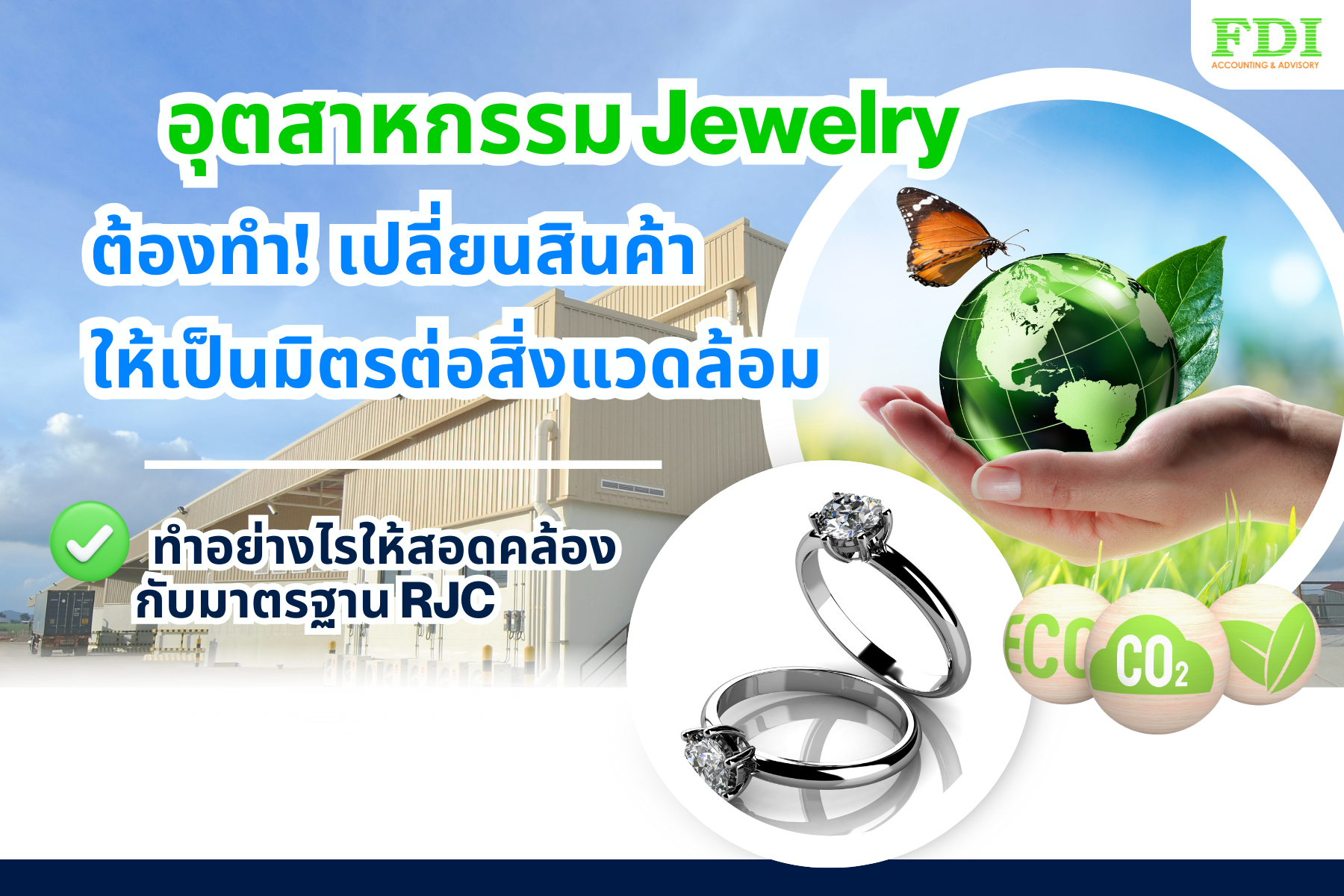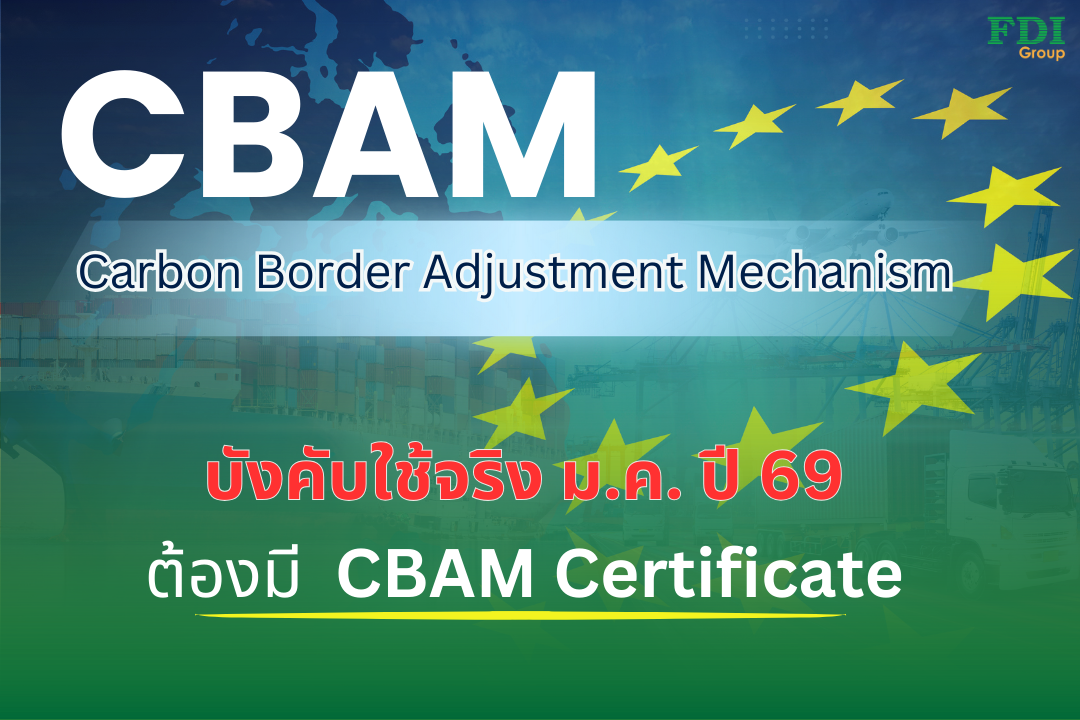Get to Know CBAM (Carbon Border Adjustment Mechanism) or Carbon Border Adjustment Mechanism
European Union (EU) is considered a global leader in tackling climate change, having set a goal to achieve Net Zero Emissions by 2050. Therefore, the implementation of the CBAM is another key factor that will help accelerate progress toward this goal. “CBAM” stands for “Carbon Border Adjustment Mechanism” or the Carbon Border Adjustment Mechanism is a measure established by the European Union (EU), which acts like a tax on imported goods based on their greenhouse gas emissions.
The CBAM measure aims to promote environmentally friendly economic growth for countries trading with the European Union. It is a mechanism that ensures imported goods into the EU have already accounted for the cost of their carbon emissions. Importers are required to purchase CBAM Certificates according to the quantity imported and the carbon emissions of the same type of goods produced within the EU. FDI believes this measure will accelerate efforts by the government, private sector, and financial sector to adapt more quickly toward a low-carbon economy. Additionally, CBAM will create business opportunities related to reducing greenhouse gas emissions.
The 6 target industries of CBAM in the first phase include which products?

- 6 target industries They are cement, electricity, fertilizers, iron and steel, aluminum, and hydrogen. CBAM entered the transition period on October 1, 2023. Targeted products must report import volumes, as well as direct and indirect carbon emissions. CBAM aims for full enforcement on January 1, 2026, when importers will be required to purchase CBAM Certificates based on import volumes and carbon emissions of the products.
Calculation of price based on greenhouse gas emissions
โดยThe Greenhouse Gas Management Organization (Public Organization) The Greenhouse Gas Management Organization (Public Organization) has provided interesting information that the greenhouse gas emissions used to calculate the CBAM price are called Embedded Emissions. This is calculated from the total greenhouse gas emissions of a product, including both direct and indirect emissions from its production process, measured in tons of carbon dioxide equivalent (tCO2e). However, electricity products exported to the EU are exempted from indirect emissions and only direct emissions are considered. The calculation method is as follows:
CBAM Embedded Emissions = Direct Emissions + Indirect Emissions (Electricity) + Indirect Emissions (Precursors) = GHG direct emissions + GHG indirect emissions from electricity + GHG indirect emissions from raw materials
* According to CBAM regulations, certain products are required to consider GHG emissions from raw materials (Precursors).
- Direct Emissions refer to the direct greenhouse gas emissions in the production process, such as fuel combustion, chemical reactions during production, and the disposal of waste gases.
- Indirect Emissions (Electricity) refer to the indirect greenhouse gas emissions resulting from electricity consumption during the production process.
- Indirect Emissions (Precursors) refer to the indirect greenhouse gas emissions generated from the production of raw materials used in manufacturing the products.
In summary During the transition period, the reporting of Embedded Emissions for all 6 product groups must follow the principles mentioned above. After the transition period, products in the iron and steel, aluminum, and hydrogen groups are required to calculate only direct greenhouse gas emissions (Direct Emissions). For other product groups, both direct and indirect greenhouse gas emissions (Indirect Emissions) must be calculated.
Source: The Greenhouse Gas Management Organization (Public Organization)
From the method of calculating Embedded Emissions, operators can learn to simplify data collection in order to submit the information to importers, who will then deliver the CBAM Report through the CBAM Registry system.
Impact of CBAM on the challenges faced by Thailand
At present, the CBAM measures have already come into effect and are currently in the transitional period. Inevitably, this results in higher costs, including those related to measuring greenhouse gas emissions,preparing documentation, and conducting verifications to comply with the established standards. These requirements increase the burden of management and raise business risks. However, on the positive side, CBAM also bringsopportunities for Thai businesses and industries. It serves as a key driver encouraging all industries to improve their production processes to be more environmentally friendly and to reduce carbon emissions.

Positive impact
1. Accelerates the reduction of carbon emissions more rapidly
Encourages businesses to reduce greenhouse gas emissions in order to achieve green policy targets as quickly as possible.
2. Increased trade and investment opportunities in the green market
Since the Embedded Emissions under CBAM cover both direct and indirect greenhouse gas emissions, investments in the green market are likely to increase. This includes expanding into green markets, as well as promoting and developing green technologies, which clearly creates new and greater opportunities.
Negative effects
- Higher Export Costs
Among the top export products to the EU are those in the steel and iron industry (including downstream steel products), which have relatively high greenhouse gas emissions. These are expected to be the most affected by CBAM, given Thailand’s significant exports to the European Union. In this regard, there is a need to strengthen management systems to handle both the direct costs of greenhouse gas emissions and the indirect costs of measuring and reporting carbon emissions, along with extensive paperwork. All of these factors will inevitably lead to higher export costs.
FDI’s Perspective: The Challenges of Green Business and the Opportunities Ahead
The impacts of this measure will, of course, vary across different sectors, depending on their reliance on the European Union market for exports and the structure of their industrial supply chains. This is because the Embedded Emissions under CBAM cover both direct and indirect greenhouse gas emissions. Within these challenges, Thai entrepreneurs must adapt in all dimensions to ensure compliance, thereby increasing their opportunities to transition further into green business.
FDI observes that trade and investment opportunities in green businesses are on the rise, as it is now evident that current international trade trends place significant emphasis on environmental issues. If Thai entrepreneurs can adapt more effectively than competitor countries, they will be able to expand their market share in the European Union, as well as in other countries that will implement CBAM.

Environmental and Sustainability Business Consulting Services
- Training Services in Carbon Management
- Long-term Consulting on BCG (Bio-Circular-Green Economy Business Model) and ESG
- Carbon Footprint and Carbon Credit Assessment and Reporting Services
- Carbon Net Zero Event Planning and Consulting Services
- We provide an Energy Dashboard Platform service that covers Scope 1, 2, and 3 emissions.
If your business sees the same opportunities as we do, let us be a part of developing green business together to create sustainability and jointly deliver positive value to society.
FDI Accounting & Advisory – Your One-Stop Comprehensive Business Consulting Partner: Simple, Complete, All in One Place!
Contact Us
- Facebook : FDI Group – Business Consulting
- Line : @fdigroup
- Phone : 02-642-6866, 02-642-6869, 02-642-6895
- E-mail : reception@fdi.co.th
- Website : www.fdi.co.th
BlogArticles
SDGs x ESG เชื่อมโยงเป้าหมายเพื่อความยั่งยืนของโลกและอนาคตของธุรกิจอย่างยั่งยืน
เมื่อโลกเผชิญกับปัญหาที่ซับซ้อน ดูทีท่าจะแก้ยากมากขึ้น ทั้งความยากจน...
Read Moreอุตสาหกรรม Jewelry ต้องทำ! ปรับโรงงานให้เป็นมิตรต่อสิ่งแวดล้อม โอกาสสร้างกำไรอย่างยั่งยืน
เพิ่มกำไรอย่างยั่งยืนให้กับโรงงาน Jewelry กับสิ่งแวดล้อม...
Read MoreCBAM Certificate คืออะไร ? ปี 69 “CBAM เริ่มภาคบังคับ” เอกสารสำคัญที่ผู้ส่งสินค้าไปยุโรปต้องรู้
จากบทความก่อนที่ FDI พาไปเจาะลึกข้อมูลเกี่ยวกับ...
Read More



